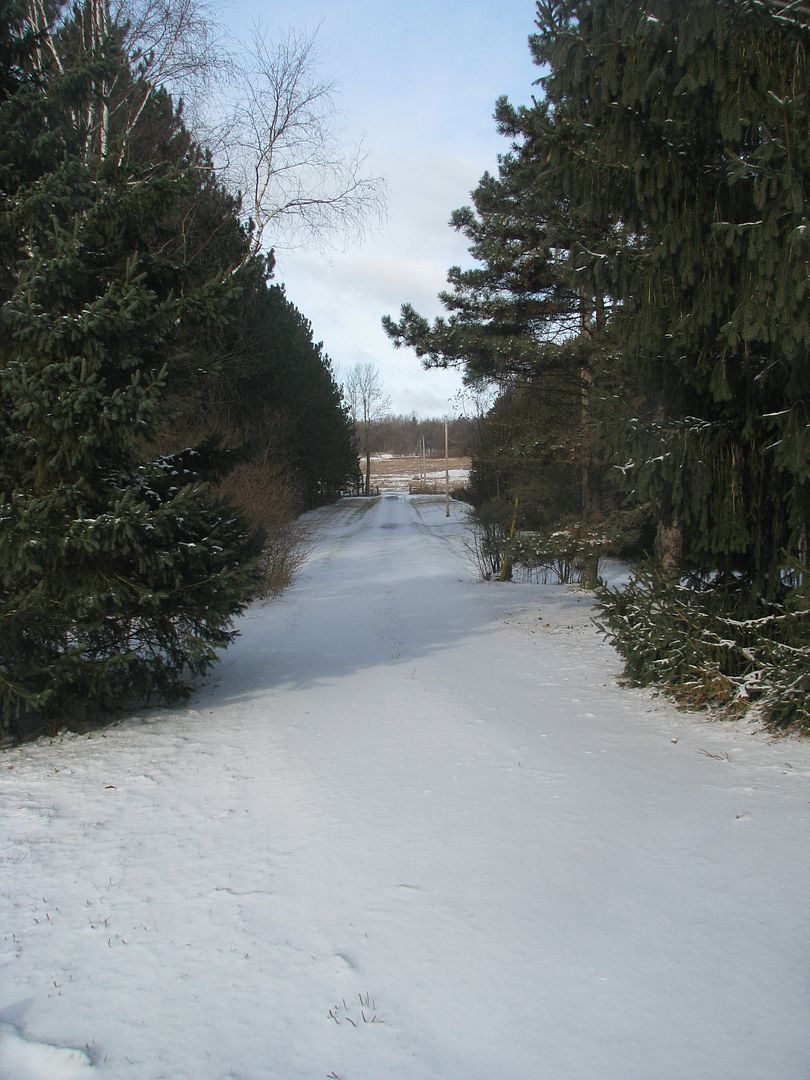
The problem with privacy is you have a looong driveway. The 600ft treed lane that leads to our new rural house.
Around these parts, winter is clearcut: when there is white, there is winter. The white falls, the wind howls and several months pass before the sun rises higher and the freeze is shredded by golden rays creating the rivlets, puddles and streams of the springtime melt. I have lived in climates where winter is dominated by cold, cranky rain or where the minimal snow shifts like sand in the frigid temperatures or where winter never quite takes hold and 20 centimetres of snow is followed by a week above zero. Though we do get our mid-winter thaw, this is really just a little bounce up from the normal minus double digits. It often happens as the path of the sun gets high enough to start the ice sweating even in subzero weather - sometime around winterlude.
A comforter for plants
A father of a friend of mine apparently managed to overwinter globe artichokes near Montreal. The region he lived used to get early, consistent, heavy snow fall. This same person moved somewhere with slightly less snow cover and now can't even get parsley to overwinter which amazes me because my parsley seems to be able to withstand sitting in a block of ice. A nursery man, also near Montreal, gets peaches to produce by cutting them close to the ground. This protects the flowerbuds produced on first year wood from the ravages of winter and the fluctuating temperatures of early spring. Various favourite members of the prunus family can be root hardy but suffer from blossom / bud kill in late spring when the temps decide to freefall for a couple of days. This is the reason why some people suggest planting early blooming fruit trees midway on a north facing slopes that warm more slowly in the spring or even planting them on a buried rock.
My own experience is that I have often gotten zone 6 plants to grow well in my urban zone 5a home but not every zone 6 plant will survive. Bronze fennel is a total bust for me but cabbage often overwinters. Of course, whether or not a plant will be vigorous in your garden depends on many factors such as soil type, heat, humidity, rainfall, pH, day length to name a few. Hardy kiwi, often rated to Z. 3 may not fruit because the growing season is not long enough.
The choices would be more limited though if it wasn't for all that shovelling we have to do. So in between the curses as you get on your winter tires, remember to thank the snow.

2 comments:
Beautiful picture of you long snow covered driveway!
Pretty. Now that I'm in the city I have a very very short driveway to shovel. Yours looks a lot like my parents driveway. Well without the dropoff on one side since they live on a mountain.
Post a Comment